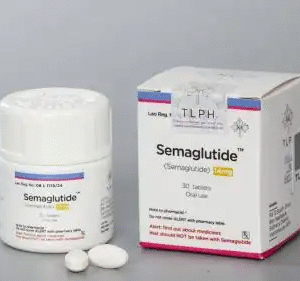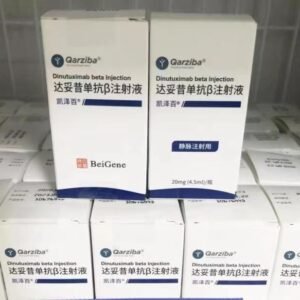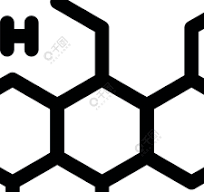Sirolimus Tablets
Effects and efficacy: Sirolimus is used for patients aged 13 years or older who have received a kidney transplant to prevent organ rejection. It is recommended that all patients receiving sirolimus be monitored for therapeutic drug blood concentrations.
Dosage and administration: The dosage and administration of different dosage forms and specifications of this product may vary. Please read the specific drug instructions for use or follow the doctor’s advice. Sirolimus tablets Sirolimus is only for use by physicians who have experience in immunosuppressive therapy and the treatment of kidney transplant patients. Patients receiving this drug should be treated in institutions equipped with appropriate laboratories and auxiliary medical facilities and personnel. The physician responsible for maintenance treatment should have complete information necessary for patient follow-up. It is recommended that sirolimus be used in combination with cyclosporine and corticosteroids. Sirolimus is used orally, once a day, with or without food on a fixed basis. The bioavailability of tablets after crushing, chewing or cutting has not been determined, so such use is not recommended. Patients who cannot take tablets should be prescribed oral solutions and instructed on how to use them. Sirolimus should be started as soon as possible after transplantation. It is recommended that sirolimus be taken 4 hours after taking cyclosporine oral solution (improved) and/or cyclosporine capsules (improved) [cyclosporine microemulsion (improved)]. Frequent adjustments of sirolimus doses based on unstable sirolimus blood concentrations may lead to overdose or underdose due to the long half-life of sirolimus. Once the maintenance dose of sirolimus is adjusted, patients should continue to take the new maintenance dose for at least 7-14 days before further dose adjustments are made under blood concentration monitoring. In most patients, dose adjustments can be calculated based on a simple ratio: new sirolimus dose = current dose × (target blood concentration / current blood concentration). When a significant increase in sirolimus trough concentrations is required, a loading dose may be considered based on the new maintenance dose: sirolimus loading dose = 3 × (new maintenance dose – current maintenance dose). The maximum dose of sirolimus administered should not exceed 40 mg/day. If the estimated daily dose of sirolimus exceeds 40 mg due to an additional loading dose, the loading dose may be given over two days. After taking the loading dose, trough concentrations of sirolimus should be monitored for at least 3-4 days. The 2 mg oral solution of sirolimus has been shown to be clinically equivalent to the 2 mg tablets of sirolimus and, therefore, can be interchanged in equal amounts. However, the clinical equivalence of higher doses of sirolimus oral solution to higher dose tablets is unknown. To minimize differences in absorption of sirolimus, the drug should be consistently taken with or without food. Grapefruit juice may slow the metabolism of sirolimus mediated by CYP3A4 and potentially enhance the reverse transport of sirolimus from the intestinal epithelium to the intestinal lumen mediated by P-glycoprotein (P-gp) and should not be used to deliver sirolimus. Coadministration of sirolimus with cyclosporine in patients with low to moderate immune risk: For new renal transplant recipients, sirolimus is recommended to be used in combination with cyclosporine and corticosteroids. The first dose of sirolimus should be a loading dose of 3 times the maintenance dose. The recommended loading dose for renal transplant patients is 6 mg and the maintenance dose is 2 mg/day. In order to maintain the blood concentration of sirolimus within the target range, the blood concentration of sirolimus should be monitored. Although the loading dose of 15 mg and the maintenance dose of 5 mg/day used in clinical trials are safe and effective, the benefit of doses above 2 mg in terms of efficacy is not clear for renal transplant patients. The overall safety of patients taking sirolimus oral solution 2 mg daily is better than that of patients taking sirolimus oral solution 5 mg daily. Dose adjustment: Low body weight patients: The starting dose for patients aged 13 years and older but weighing no more than 40 kg should be adjusted to 1 mg/m2/day based on body surface area. The loading dose should be adjusted to 3 mg/m2. Patients with hepatic impairment: It is recommended that the maintenance dose of sirolimus for patients with hepatic impairment can be reduced by about 1/3 to 1/2. The loading dose of sirolimus does not need to be adjusted. For patients with hepatic impairment, it is recommended to monitor the blood trough concentration of sirolimus. Patients with renal impairment: No adjustment is required for the loading dose of sirolimus. No dose adjustment is required due to renal impairment. Pediatric Use: The safety and efficacy of sirolimus in pediatric patients under 13 years of age have not been established. The safety and efficacy of sirolimus have been studied in children aged 13 years and older with low to moderate immune risk. The use of sirolimus in this population of 13 years and older has been supported by adequate, well-controlled clinical trials of sirolimus oral solution in adults. In these trials, pharmacokinetic data from pediatric renal transplant patients were specifically analyzed. Elderly Patient Use: No dose adjustment is required. Sirolimus Capsules This product is only for use by physicians who are experienced in immunosuppressive therapy and the management of renal transplant patients. Patients receiving this drug should be treated in institutions equipped with appropriate laboratory and auxiliary medical facilities and personnel. The physician responsible for maintenance treatment should have complete information necessary for patient follow-up. It is recommended that this product be used in combination with cyclosporine and corticosteroids. For other details, please refer to the instructions. Sirolimus Oral Solution It is recommended that sirolimus oral solution be used in combination with cyclosporine and corticosteroids. The loading dose on the first day is a single dose of 6 mg, 2 mg/day within 2 weeks (the dose can be reduced if adverse reactions occur), and 1-2 mg/day after 2 weeks. To minimize the difference in absorption of this drug, this drug should be taken with or without food constantly. Grapefruit juice can slow the metabolism of sirolimus regulated by CYP3A4, so it should not be used to deliver or dilute sirolimus oral solution. It is recommended to take sirolimus 4 hours after taking cyclosporine oral solution (microemulsion) and/or cyclosporine capsules (microemulsion). Dose adjustment: The starting dose for patients aged 13 years and above but weighing no more than 40 kg should be adjusted according to body surface area, at 1 mg/m2/day, and the loading dose should be 3 mg/m2. It is recommended that the maintenance dose of this drug be reduced by about 1/3 in patients with hepatic impairment, but the loading dose does not need to be adjusted. Sirolimus pharmacokinetics have not been studied in patients with severe hepatic impairment. The dose does not need to be adjusted in patients with renal impairment. Blood concentration monitoring: Most patients do not require routine monitoring of therapeutic drug levels. Sirolimus blood levels should be monitored in children, patients with impaired hepatic function, patients taking strong CYP3A4 inducers and inhibitors, and/or patients whose cyclosporine doses have been significantly reduced or discontinued. In controlled clinical trials with concurrent cyclosporine use, mean whole blood trough concentrations of sirolimus measured by immunoassay were 9 ng/mL for the 2 mg/day group and 17 ng/mL for the 5 mg/day group. Results obtained by other assays may differ from those obtained by immunoassay. Dilution and Administration Instructions: The prescribed amount of oral solution of this medication should be drawn from the bottle using an oral applicator. Place the accurately measured amount of this medication from the applicator into a glass or plastic container containing at least one-quarter cup (approximately 60 mL) of water or orange juice (do not dilute with other liquids, especially grapefruit juice). Stir well and drink immediately. Add at least one-half cup (approximately 120 mL) of water or orange juice to the same container for rinsing and drink the entire amount immediately. Disposal and Disposal: No special precautions are required because this medication is not absorbed through the skin. However, if it comes in direct contact with the skin or mucous membranes, wash thoroughly with soap and water; rinse eyes with clean water.
Drug contraindications:
Allergic to this product is prohibited. Use with caution during pregnancy
Related dosage forms:
Capsules, tablets, oral solution
Share:
Products
Our offers
Health Classification
Let us work together to protect precious health



























